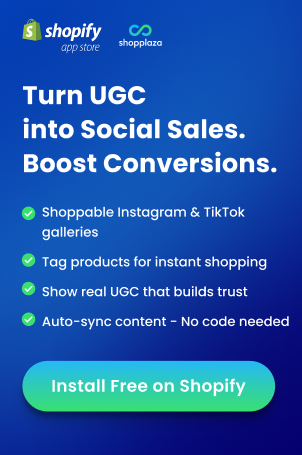Shopify GraphQL is a great tool for businesses to fetch and assess data. With the introduction of GraphQL, Shopify has taken a giant leap forward in providing developers and entrepreneurs with a powerful toolset for building robust and flexible online stores.
If you’re an e-commerce enthusiast or a business owner seeking to unleash the full potential of your online store, this blog is for you. We’ll explore Shopify’s game-changing GraphQL technology and its best practices. Let’s get started!
Table of Contents:
- What is GraphQL and how does it work?
- What are the key features of Shopify GraphQL?
- What are the main differences between GraphQL and REST APIs in Shopify development?
- Why should you use Shopify GraphQL?
- Define the data needs
- Overcome the versioning and compatibility issues
- Improve documenting and testing
- Reduce client-side code complexity
- Real-time updates
- Compatibility with business
- How to integrate Shopify with GraphQL
- 10 best practices for Shopify GraphQL
- Wrapping up
What is GraphQL and how does it work?
In 2015, Facebook introduced GraphQL, an open-source query language designed to revolutionize the way APIs retrieve information from existing data. With GraphQL, the process of requesting data from other applications or software becomes structured, expressive, and incredibly efficient.

In contrast to REST APIs, GraphQL empowers clients and users to make a single API call and fetch multiple resources simultaneously. Instead of receiving excessive or insufficient data, GraphQL ensures that the response precisely matches the requested information.
By enabling developers to specify their data requirements precisely, GraphQL significantly enhances the efficiency of data retrieval.
At the heart of GraphQL’s functionality is the concept of a single endpoint that handles all API requests. This endpoint serves as a gateway for communication between the client and the API.
When a client needs specific data, it formulates a query outlining its requirements. The API processes it and returns exactly the requested data, minimizing unnecessary transmission and optimizing communication.
What are the key features of Shopify GraphQL?
Shopify GraphQL offers several key features that make it a great tool for developers and users:
- Strongly-typed Schema: Defines available data types, fields, and relationships, ensuring accurate and predictable retrieval.
- Single Endpoint: Simplifies design by retrieving multiple resources in a single query, improving performance.
- Introspection: Enables querying the schema at runtime, aiding debugging and exploration.
- Efficient Development and Maintenance: Enhances productivity and reduces costs with self-documentation and precise fetching.
What are the main differences between GraphQL and REST APIs in Shopify development?
REST APIs have long been widely used but come with issues like over-fetching (too much data) or under-fetching (not enough).

- REST APIs: Clients often call different endpoints for specific resources, leading to multiple round trips. The server defines response structure.
- GraphQL: Uses a single endpoint where clients specify exact data and relationships, reducing overhead and improving efficiency.
Why should you use Shopify GraphQL?
Define the data needs
GraphQL lets you request only the required fields, reducing multiple calls and optimizing bandwidth.

This improves performance and scalability, ensuring smoother user experiences.
Overcome the versioning and compatibility issues
GraphQL’s strongly-typed schema allows API evolution without breaking existing clients. Developers can add or remove fields more easily than in REST.
Improve documenting and testing
GraphQL is self-documenting and provides runtime introspection. This improves collaboration, debugging, and testing while reducing miscommunication.
Reduce client-side code complexity
GraphQL supports fragments and nested queries, allowing clients to fetch all needed data in one call, reducing boilerplate and errors.

Real-time updates
Through GraphQL subscriptions, clients can receive live updates, such as order notifications, enhancing customer experience and inventory management.
Compatibility with business
GraphQL easily adapts as your business evolves by allowing schema modifications without breaking existing queries.
How to integrate Shopify with GraphQL
When using Shopify GraphQL, authentication with a valid Shopify access token is required.
- Public and custom apps: OAuth authentication.
- Private apps: HTTP authentication.

Steps to create a private app with Shopify GraphQL:
- Create a Shopify developer account.
- Access the Developer Dashboard.
- Create a Development Store.
- Open the store and go to Apps.
- Create a Private App.
- Enter credentials and save.
- Generate the Shopify GraphQL Access Token.
10 best practices for Shopify GraphQL
- Use Shopify Admin API GraphQL Explorer for testing queries.
- Utilize Admin API GraphQL for unified data access.
- Implement pagination for large datasets.
- Optimize with query batching to reduce requests.
- Employ caching to reduce server load.
- Enhance mutations with input types for readability.
- Leverage subscriptions for real-time updates.
- Use descriptive field names for clarity and maintainability.

Wrapping up
Shopify GraphQL is a powerful tool for building scalable, maintainable, and high-performing applications. By following best practices, you can optimize your workflow and unlock Shopify’s full potential.
This guide to Shopify GraphQL integration should help you better understand and confidently use this technology to grow your online business.


